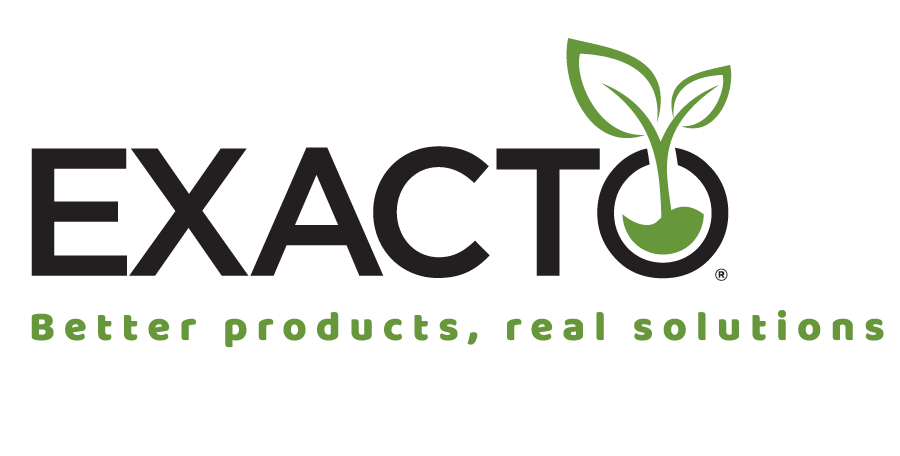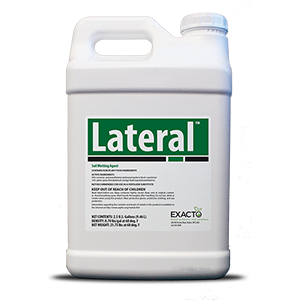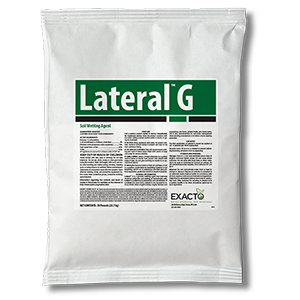Drought events create major constraints for water availability across the United States. While such events often impact farming and food production, they also profoundly affect urban and suburban areas where turfgrass is a primary irrigated ground cover. Healthy turfgrass reduces erosion and runoff by stabilizing the soil, and transpiration (i.e., water uptake through the turf plant and out the stomata) creates a cooling effect that reduces temperatures and urban heat island effect.
When drought threatens water availability, soils can dry to the extent that turf either goes dormant or dies, diminishing its beneficial impact on the ecosystem. Once soils become dry, they can develop water repellency or hydrophobicity, making it extremely difficult for water to penetrate and re-wet the soils.
Soil Hydrophobicity
The water repellency is caused by microbiota and decomposing organic matter from the turf in the soil. They create an organic coating on the hydrophobic soil particles. The image below is a microscopic image of a sand grain with a hydrophobic coating.
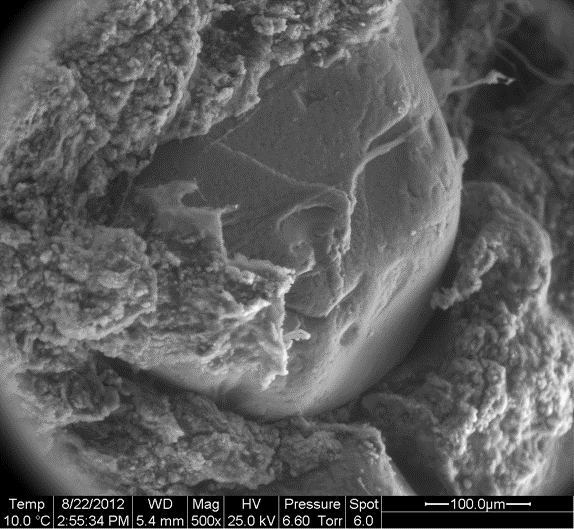
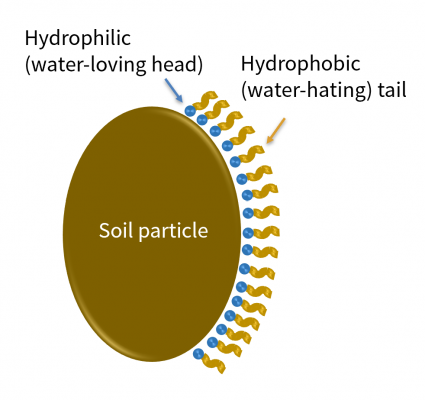
The turnover of soil microbes and decomposition of organic matter in the soil creates organic compounds that can coat soil particles and cause water-repellency or hydrophobicity (image above). These coatings are especially prevalent in sandy soils, including golf course putting greens. Once these coating form, it is challenging to wet the soil, and plants growing in these environments can experience extreme water stress. Therefore, wetting agents are a crucial tool to help overcome soil hydrophobicity.
Localized Dry Spot (LDS)
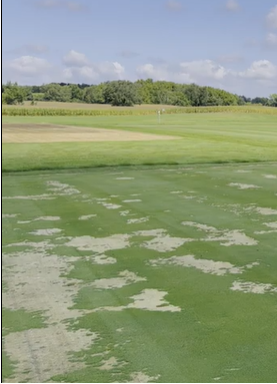
Wetting Agents
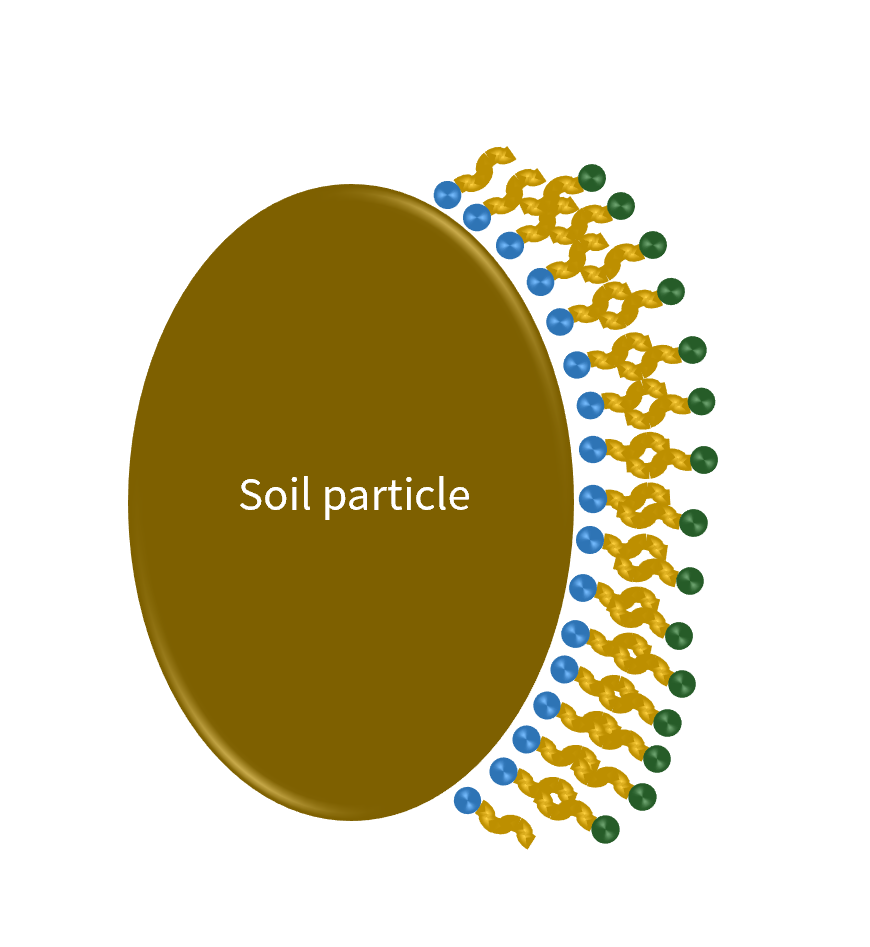
Hydrophobic soil with wetting agent
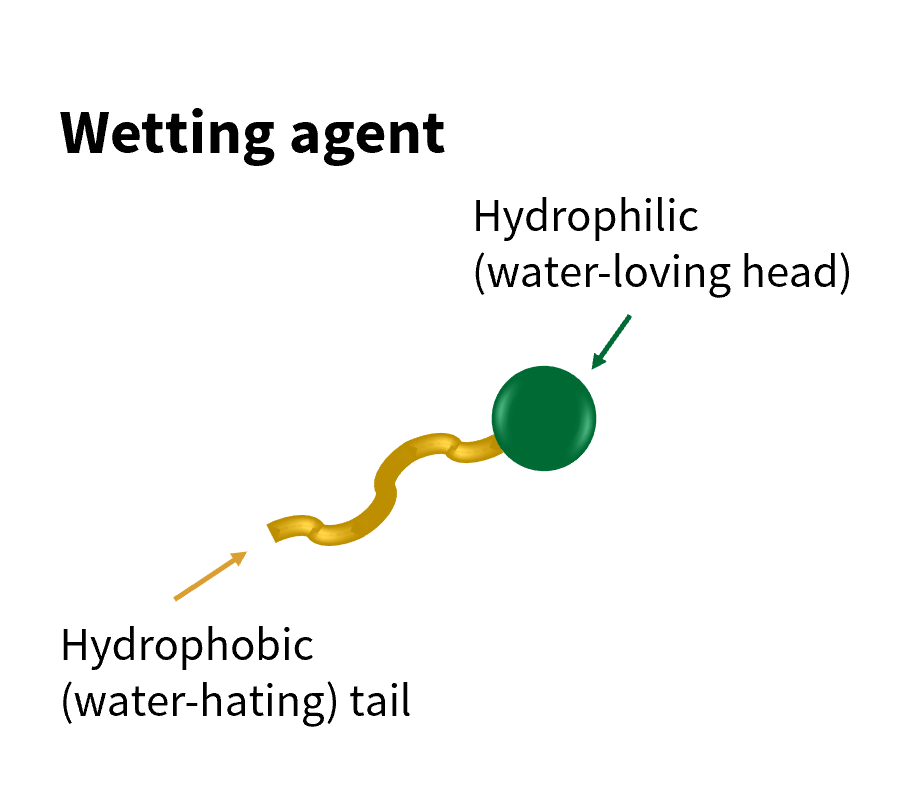
The hydrophobic coatings around soil particles can be treated with various types of soil-wetting agents.
Wetting agents contain “amphiphilic” molecules with a hydrophilic (water-loving) head and a hydrophobic (water-hating) tail. These molecules create bridges with the organic coatings surrounding the hydrophobic soil and reduce hydrophobicity.
Therefore, wetting agents improve water penetration and moisture uniformity in these soils. Uniform soil moisture distribution leads to a more even, healthy turf stand, and less labor is required to irrigate and maintain these areas. The benefit of the application can last for several weeks.

The video below shows the behavior of water with and without the wetting agent, Lateral™. The top half of the video is turfgrass affected by LDS, and the bottom half is well irrigated. In both cases, the water with Lateral will penetrate the soil easily to reach the root zone of the grass.
Lateral helps treat and prevent Localized Dry Spot
Lateral is a soil-wetting agent that reduces soil hydrophobicity and helps prevent localized dry spots. It is available in a liquid formulation to treat larger areas or granular for broadcast applications.
Lateral, Soil Wetting Agent
Lateral lowers the time it takes for water to penetrate hard-to-wet soils.
- Improves soil moisture uniformity
- Reduces hydrophobicity and localized dry spot (LDS)
- Increases water infiltration and penetration
- Increases water-use efficiency
- The highly concentrated formula allows for more flexibility in use-rates
